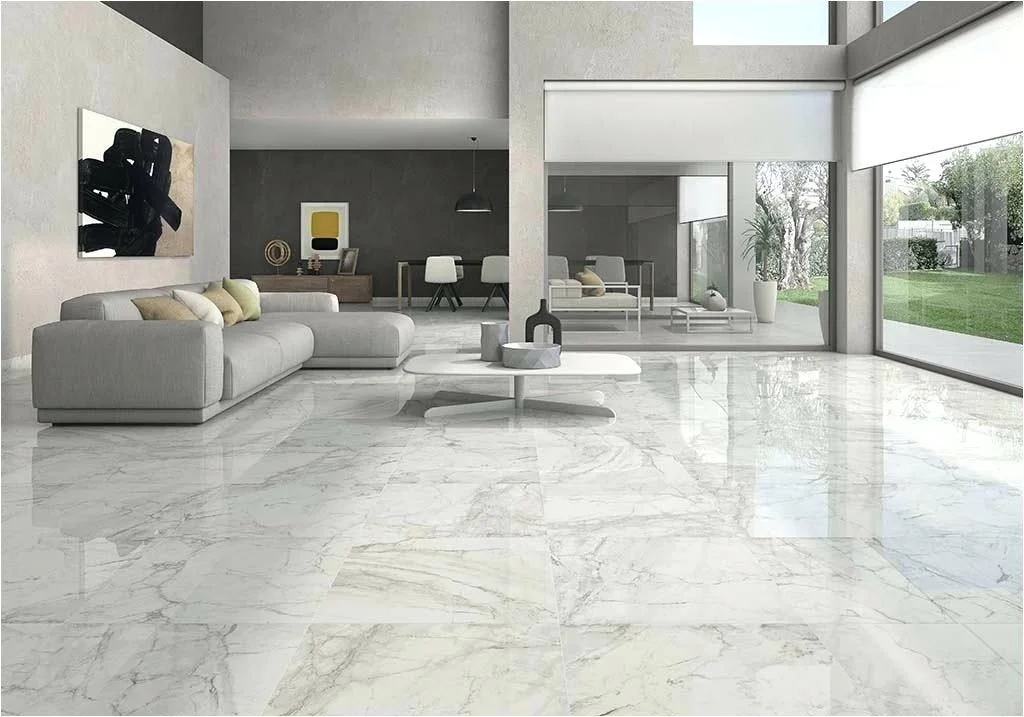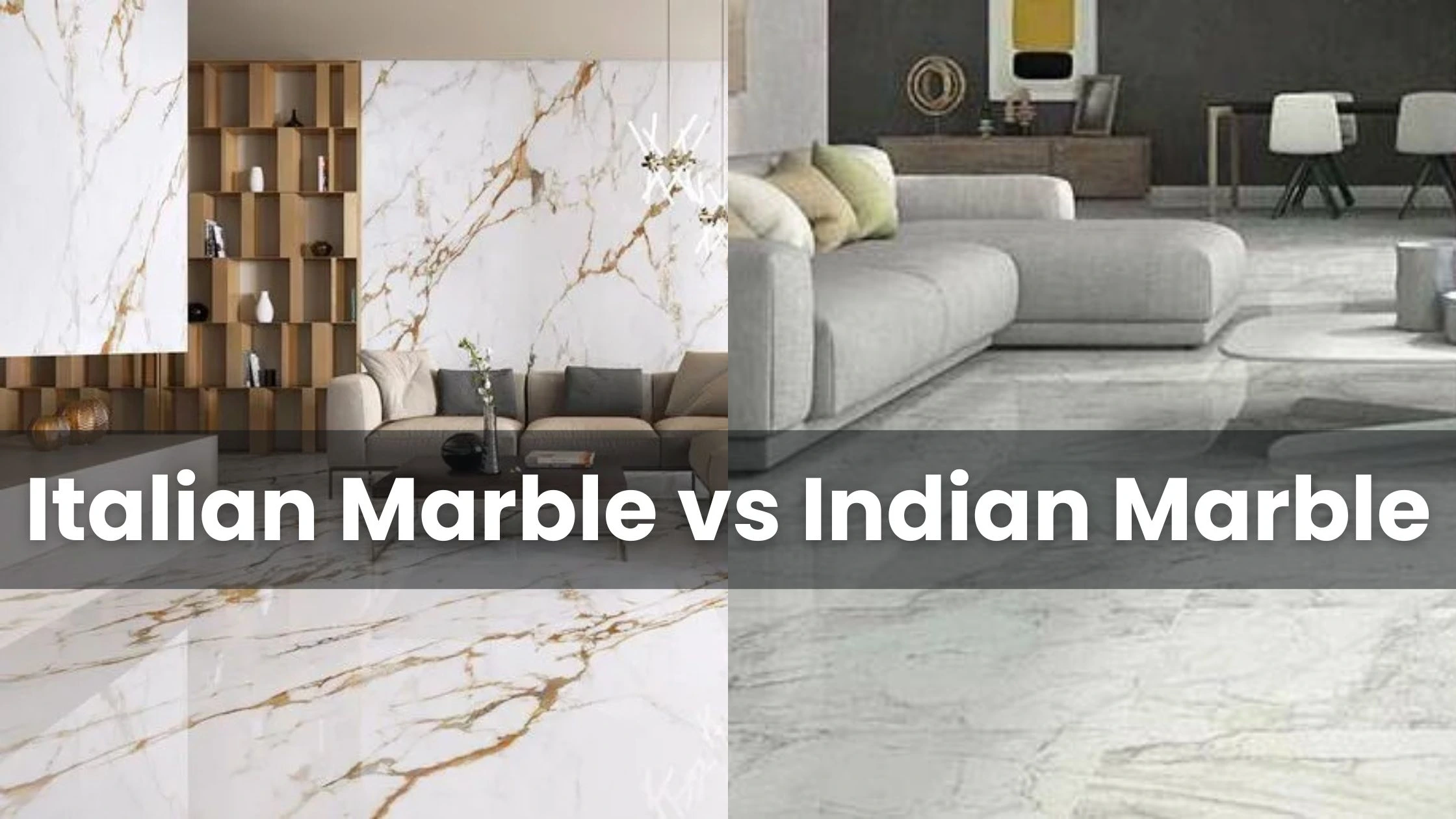Table of Content
Marble has long been a symbol of elegance and luxury in home interiors. Whether used in flooring, countertops, or accent walls, this timeless natural stone adds sophistication to any space. In this article, we delve deep into the topic of Italian Marble vs Indian Marble to help you understand their differences in terms of origin, aesthetics, cost, durability, and maintenance.
This comparison is especially useful for homeowners, interior designers, and those involved in quality furniture projects who work with some of the best furniture designers and the best furniture brands in India, including luxury furniture brands.
Italian Marble vs Indian Marble
When comparing Italian Marble vs Indian Marble, it’s important to consider where each type of marble originates and what characteristics set them apart.
Italian Marble

- Origin: Quarried from various regions in Italy, Italian marble is globally renowned for its sophistication and high polish.
- Aesthetics: Italian marble typically exhibits high lustre with intricate veining. Varieties such as Statuario, Botticino, and Carrera are celebrated for their smooth textures and elegant color palettes.
- Applications: Often chosen by luxury designers, Italian marble is a popular choice for upscale residential projects, luxury hotels, and commercial spaces that aim for a high-end finish.
- Cost: Generally, Italian marble commands a higher price due to its superior finish, exclusivity, and the skilled craftsmanship required for installation.
Also Read: 11 Stunning Granite Kitchen Countertop Ideas for Your Home
Indian Marble

- Origin: Mined from states like Rajasthan, Gujarat, and Madhya Pradesh, Indian marble offers a diverse range of colors and patterns.
- Aesthetics: While Indian marble may not always have the same level of polish as its Italian counterpart, it boasts robust, earthy textures and a rich variety of hues. Popular types include Makrana, Ambaji, and Jodhpur marble.
- Applications: Indian marble is widely used in residential and commercial projects across India, making it a favored option for those seeking quality furniture integration and durable finishes.
- Cost: Indian marble is typically more affordable, which makes it a cost-effective option for large-scale installations and projects by the best furniture designers and top furniture brands in India.
Key Comparison Points: Italian Marble vs Indian Marble
To determine which type of marble best suits your project, consider the following comparison factors:
1. Cost and Value
- Italian Marble:
- Price Range: Often priced higher (₹150 to ₹900 per sq. ft. or more in India) due to its premium finish and exclusivity.
- Value Proposition: Ideal for luxury projects and high-end interiors where a statement is essential.
- Indian Marble:
- Price Range: More budget-friendly, starting as low as ₹70 per sq. ft., making it a practical choice for large areas.
- Value Proposition: Offers excellent durability and versatility, making it well-suited for both traditional and modern spaces.
2. Aesthetics and Visual Appeal
- Italian Marble:
- Renowned for its high sheen and refined veining patterns, Italian marble creates a luxurious, opulent look.
- Preferred by luxury furniture brands and high-end interior projects.
- Indian Marble:
- Exhibits a wide range of colors and patterns, from subtle and understated to bold and dramatic.
- Its robust appearance is ideal for adding character to quality furniture setups and spacious residential environments.
3. Durability and Maintenance
- Italian Marble:
- While visually stunning, some Italian varieties are softer and more prone to scratches and stains.
- Requires regular maintenance and periodic polishing to maintain its luster, which can be a consideration for busy households.
- Indian Marble:
- Generally more durable and harder, making it resistant to wear and tear.
- Easier to maintain and more forgiving in high-traffic areas, which is why many of the best furniture designers recommend it for both indoor and outdoor applications.
4. Installation and Workmanship
- Italian Marble:
- Often requires skilled craftsmen for installation due to its unique thickness and finishing requirements.
- The process is typically more labor-intensive and costlier.
- Indian Marble:
- Installation can be managed by semi-skilled workers, reducing overall project costs.
- Its availability in various thicknesses offers flexibility during installation.
5. Environmental and Local Considerations
- Italian Marble:
- Imported marble involves additional logistics and higher carbon footprints due to transportation.
- Its use is often associated with projects that have a global appeal.
- Indian Marble:
- Locally sourced and more sustainable in the Indian market.
- Favored for projects aiming to incorporate local materials and support regional industries.
Also Read: Best Bedroom Colour Combinations to Create Your Perfect Sleep Sanctuary
Why the Comparison Matters
Understanding the differences between Italian Marble vs Indian Marble is crucial for making informed decisions in interior design and construction. Here are a few reasons why this comparison is important:
- Informed Decision-Making:
Homeowners, architects, and interior designers can weigh the benefits and drawbacks of each type of marble before making a purchase. - Budget Planning:
Knowing the cost differences helps in planning the overall budget for renovation or construction projects, ensuring that the selection aligns with financial constraints. - Aesthetic Goals:
The choice between Italian marble and Indian marble can significantly impact the visual outcome of a space. This decision is especially vital when working on luxury projects or quality furniture installations that require precision and finesse. - Maintenance Considerations:
Evaluating durability and maintenance requirements ensures that the chosen marble will stand the test of time, reducing future upkeep costs.
Practical Applications: Where to Use Each Type
When considering Italian Marble vs Indian Marble, the intended application plays a pivotal role:
- Residential Projects:
- Italian Marble: Best suited for accent walls, countertops, and statement pieces in luxury homes.
- Indian Marble: Ideal for flooring, large surface areas, and areas where durability is paramount.
- Commercial Projects:
- Italian Marble: Often used in upscale hotels, corporate offices, and premium retail spaces.
- Indian Marble: Frequently chosen for office spaces, public buildings, and large-scale installations where cost-effectiveness is essential.
- Integration with Quality Furniture:
Interior designers working on projects that include quality furniture often select marble that complements modern design trends. Whether the project involves luxury furniture brands or local craftsmanship, the choice between Italian marble and Indian marble can elevate the overall design.
Conclusion
The debate of Italian Marble vs Indian Marble ultimately comes down to balancing cost, aesthetics, durability, and project requirements. Italian marble, with its high gloss and intricate veining, is synonymous with luxury and is preferred in high-end design projects. In contrast, Indian marble offers robust durability, cost-effectiveness, and a rich variety of textures and colors that suit a wide range of applications.
By understanding these differences, homeowners, designers, and builders can make informed decisions that align with their style preferences and budgetary needs. Whether you choose the opulence of Italian marble or the rugged charm of Indian marble, both options can transform your space into a work of art when paired with the expertise of the best furniture designers and the offerings of the best furniture brands in India.
In summary, Italian Marble vs Indian Marble is not just a comparison, it's about selecting the right material to achieve your desired ambiance, ensuring that every project, from quality furniture setups to luxury interiors, is a testament to timeless beauty and enduring strength.
Also Read: 9 Modern Stair Grill Design Ideas to Enhance Your Home's Interior











_1766133697.webp)
Ans 1. Italian Marble is known for its luxurious sheen, intricate veining, and high cost, often used in upscale projects. Indian Marble is more affordable, durable, and offers a wide range of colors and patterns suitable for both residential and commercial spaces.
Ans 2. Italian Marble is ideal for luxury interiors due to its smooth texture, high gloss, and exclusive appearance. It is commonly used in high-end homes, luxury hotels, and commercial spaces.
Ans 3. Yes, Indian Marble is an excellent option for residential use. It is durable, cost-effective, and offers a variety of textures and colors that suit both traditional and modern designs.
Ans 4. Italian Marble is significantly more expensive, ranging from ₹150 to ₹900 per sq. ft., while Indian Marble is more budget-friendly, starting as low as ₹70 per sq. ft.
Ans 5. Indian Marble is generally more durable and easier to maintain, making it ideal for high-traffic areas. Italian Marble requires more frequent polishing and careful maintenance to preserve its shine.
Ans 6. While Italian Marble can be used outdoors, its softer nature makes it more susceptible to wear and tear in harsh weather conditions. Indian Marble, being harder and more durable, is often preferred for outdoor areas.
Ans 7. Both Italian and Indian Marble can be used in commercial spaces, but Italian Marble is more commonly used in high-end commercial projects due to its premium appearance. Indian Marble is a popular choice for budget-conscious large-scale installations.
Ans 8. Yes, Italian Marble can be used for flooring, especially in high-end homes and luxury spaces, but it requires regular maintenance to prevent scratches and stains.
Ans 9. Indian Marble is more sustainable as it is locally sourced, reducing transportation-related carbon footprints. Italian Marble, being imported, involves a higher carbon footprint.
Ans 10. Italian Marble typically requires skilled craftsmen due to its thickness and finishing requirements, making installation more labor-intensive and costly. Indian Marble, being more versatile, can be installed by semi-skilled workers, reducing overall costs.